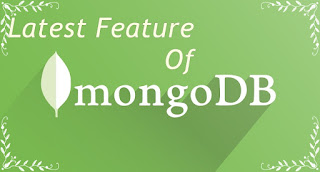Mongo DB has been wildly popular ever since its introduction for plenty of reasons. The biggest one was because it got rid of the Object-Relation Mapping to a large extent, which had been the source of trouble of programmers for years. Even today, it is the 5th most popular database. However, the graph of popularity of Mongo DB decreased somewhat over the years, due to introduction of more advanced and simplified NoSQL databases. This might change with the release of Mongo DB 3.4, released late last year. According to the company, they seek to attain a "digital transformation" with this release.
The clear message that the company gave with this release was that it is aiming to simplify the life of large enterprises that have depended upon Mongo DB for long now. Like Python, Mongo DB is aiming to evolve so that it alone suffices for tasks that earlier required multiple technologies. Since we have seen this formula succeeding more than once, we have to admit this is a very smart move from the company.
Graph support was the need of the hour in Mongo DB for quite some time now. Taking more than 3 years to become a reality, it is arguably the biggest addition in the new version. While it does not seem to pose any threat to established graph databases like Neo4J, the graph support is sure to simplify things for its existing users. This feature is sure to have large impact, as it will facilitate companies to explore hitherto doubted avenues like Deep Analytics, Internet of Things and Artificial Intelligence. This would be further aided by Atlas, Mongo DB's database cloud service released earlier last year.
Ecommerce websites working upon Mongo DB had toiled hard for long to provide decent search functionality to its customers. This ends with the faceted navigation feature, which uses filters to narrow down the query results. This ensures faster and more relevant search results. Also, a read-only mode was introduced that could expose the information of an application while preventing any modification. Another huge feature was the creation of Geo-distributed Mongo DB zones, which deals with the problem of data sovereignty and solves it by providing tagging via a higher abstraction of �zones�.
The release also had few things in store for the regular users. The new SQL interface is sure to greatly ease things for the users who have struggled for long to import their SQL code into Mongo. Mongo DB also introduced the ($switch) operator, which greatly simplifies complex branching, while making it more readable. Like the popular "switch" expression, it tests a number of cases, executing only the one that turns out to be true. Another addition was the ($reduce) operator, that could reduce the results of multiple arrays into a single expression.
Apart from this, there has been a whole array of other additions, whose actual importance would only be realized in the long run. This includes elastic clustering, tunable consistency and enhanced DBA.
Overall, this release has been quite impressive and an instant success. Mongo DB has made its intention very clear: It is here to stay and win. With this, other NoSQL providers like Redis and Cassandra as well as established SQL players like MySQL and Oracle will have to up their game.

0 Response to "Overview of Mongo DB 3.4 : New Features"
Posting Komentar